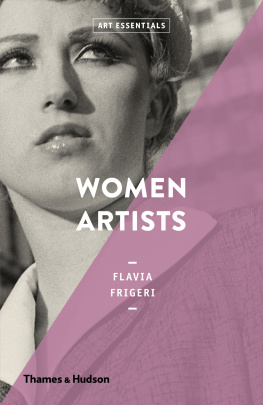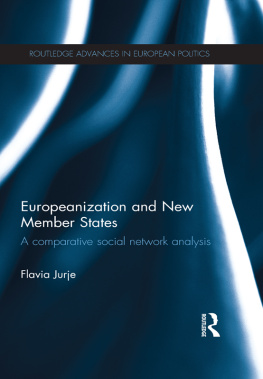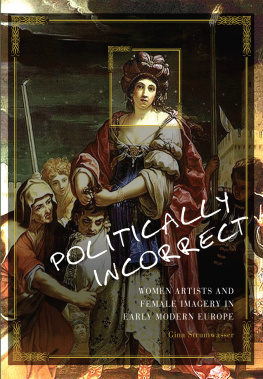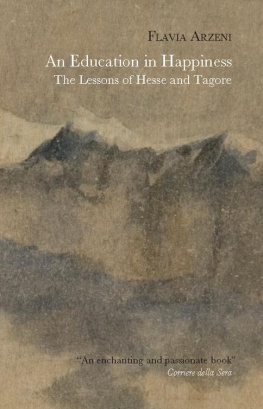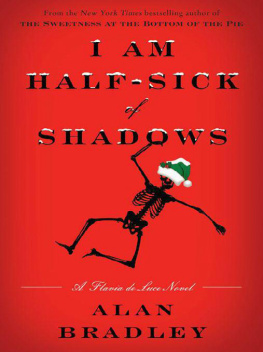Flavia Frigeri - Women Artists
Here you can read online Flavia Frigeri - Women Artists full text of the book (entire story) in english for free. Download pdf and epub, get meaning, cover and reviews about this ebook. year: 2019, publisher: Thames and Hudson Ltd, genre: Non-fiction. Description of the work, (preface) as well as reviews are available. Best literature library LitArk.com created for fans of good reading and offers a wide selection of genres:
Romance novel
Science fiction
Adventure
Detective
Science
History
Home and family
Prose
Art
Politics
Computer
Non-fiction
Religion
Business
Children
Humor
Choose a favorite category and find really read worthwhile books. Enjoy immersion in the world of imagination, feel the emotions of the characters or learn something new for yourself, make an fascinating discovery.
- Book:Women Artists
- Author:
- Publisher:Thames and Hudson Ltd
- Genre:
- Year:2019
- Rating:3 / 5
- Favourites:Add to favourites
- Your mark:
- 60
- 1
- 2
- 3
- 4
- 5
Women Artists: summary, description and annotation
We offer to read an annotation, description, summary or preface (depends on what the author of the book "Women Artists" wrote himself). If you haven't found the necessary information about the book — write in the comments, we will try to find it.
Women Artists — read online for free the complete book (whole text) full work
Below is the text of the book, divided by pages. System saving the place of the last page read, allows you to conveniently read the book "Women Artists" online for free, without having to search again every time where you left off. Put a bookmark, and you can go to the page where you finished reading at any time.
Font size:
Interval:
Bookmark:




Dr Flavia Frigeri is an art historian and curator, and currently Teaching Fellow in the History of Art department at University College London. Previously she served as a Curator at Tate Modern, where she worked on exhibitions, acquisitions and permanent collection displays. She is also the author of Pop Art in the Art Essentials series.
Thames & Hudson include:
Art Essentials: Key Moments
Art Essentials: Modern Art
Representing Women
Women Artists
See our websites
www.thamesandhudson.com
www.thamesandhudsonusa.com
Women have traditionally been among art historys favourite objects of representation. As the ultimate emblems of beauty they have been endlessly depicted, and yet their role as producers of art has constantly been subordinated to that of their male peers. Astonished by the lack of recognition suffered by female artists, the American art historian Linda Nochlin asked in 1971: Why have there been no great women artists? Nochlins timely question expressed a sense of urgency shared by a critical tide of female artists, art historians and critics.
Up to that point the history of art had been dominated by male artists, but this did not mean that there had not been any great women artists. Quite the contrary: women had long been active and working as hard if not harder than their male peers. Their art, however, was more difficult to find. This is especially true of the medieval, Renaissance and Baroque periods when art was almost entirely a male preserve: women were often forced to work in anonymity or take on male pseudonyms. Their work in studios run by male artists was given little or no credit. As the Flemish artist Clara Peeters reminded us, with the hidden self-portraits in her still lifes, women demanded to be seen (pages 1619).
Although the situation has improved, in 1989 the feminist collective known as the Guerrilla Girls demanded, Do women have to be naked to get into the Met. Museum? (page 164). Women and their naked bodies were seen across museum displays; their work as art-makers, however, still remained greatly underacknowledged.
Taking as a starting point the Italian Mannerist painter Lavinia Fontana, this survey will show how women artists went from being objects of passive contemplation to active makers. The focus here is on more than fifty women artists, active from the sixteenth century to the present day, working across media and touching on varying themes. The aim of this broad selection is to give the reader a general understanding of role of women in the history of art, as well as an appreciation of the lives and work of these remarkable female artists.

You will find the spirit of Caesar in the soul of this woman
Artemisia Gentileschi
The Italian Mannerist painter Lavinia Fontana is widely regarded as the first woman artist to forge an independent artistic career. Her father, Prospero Fontana, was a leading painter in Bologna, where Lavinia was born. From an early age Fontana cultivated her passion for art and was exposed to the work of the painters Raphael and Parmigianino, while also benefitting from her fathers attentive training.
One of Fontanas patrons once remarked: This excellent Painter, to say the truth, in every way prevails above the condition of her sex and is a most remarkable person. Fontana was a very rare exception in the Mannerist landscape. She was a prolific portraitist and achieved reasonable success with her public and private commissions. Her altarpieces for churches in Rome and Bologna gave her a recognition usually reserved for male artists only. Today many of her works are in a frail condition, but the painting Portrait of Bianca degli Utili Maselli and Six of Her Children (c.1600) vividly illustrates Fontanas pictorial qualities (opposite). A portrait of the noblewoman Bianca degli Utili with her daughter and five sons is most remarkable for the meticulous detailing of the hairdos and richly embroidered clothes. Fontana strived to capture here the elegance of the family as well as the tenderness and intimacy of their relationship. Fontana died in Rome in 1614. She left behind what is considered to be the largest body of work by any woman artist active before 1700.
Noli Me Tangere, 1581, Galleria degli Uffizi, Florence, Italy
Queen Luisa of France Presenting Francis I, Her Son, to St Francis of Paola, 1590, Pinacoteca Nazionale, Bologna, Italy
Venus Sucking Cupid, 1610s, The State Hermitage Museum, St Petersburg, Russia
Minerva in the Act of Dressing, 1613, Galleria Borghese, Rome, Italy

Lavinia Fontana
Portrait of Bianca degli Utili Maselli in an Interior Holding a Dog and Surrounded by Six of Her Children, c.1600
Oil on canvas, 99 133.5 cm (39 52 in.)
Private collection
The two boys on the far right are shown holding a pen and an inkpot and a medallion with a figure of a knight. These objects are believed to allude to their future professions.
1577 Fontana marries the artist Paolo Zappi, who painted the draperies in her works; together they have eleven children, only three of whom outlive Fontana.
1589 The artist is commissioned to paint a public altarpiece of The Holy Family and St John for San Lorenzo de El Escorial in Madrid, for which she receives a lavish payment of 1,000 ducats.
To this day Artemisia Gentileschi is widely acclaimed as the leading female artist of the Baroque period (c.16001750), characterized by its grandeur and its sense of the dramatic. She substantially contributed to the art of her time. Like Fontana, she was the daughter of a renowned artist, but her background was comparatively humble. To ensure that his daughter was properly trained, Orazio Gentileschi enlisted the help of his friend and collaborator Agostino Tassi. The apprenticeship under Tassi, however, had a tragic consequence when the master made sexual advances on the young Artemisia. Failing to keep his promise of marriage, Tassi was then accused by Orazio of rape. The trial proved to be emotionally distressing for Artemisia who was publicly humiliated with her reputation tainted. As a result, she was forced to leave Rome.
Shortly after the end of the trial, Gentileschi married the Florentine artist Pietro Stiattesi in 1611 and together they moved to Florence. It was here that she made one of her most renowned works, Judith Beheading Holofernes
Next pageFont size:
Interval:
Bookmark:
Similar books «Women Artists»
Look at similar books to Women Artists. We have selected literature similar in name and meaning in the hope of providing readers with more options to find new, interesting, not yet read works.
Discussion, reviews of the book Women Artists and just readers' own opinions. Leave your comments, write what you think about the work, its meaning or the main characters. Specify what exactly you liked and what you didn't like, and why you think so.

